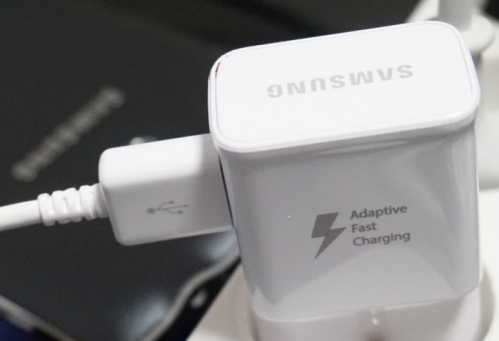Categories: Featured Articles » Sharing experience
Number of views: 60029
Comments on the article: 1
Why is the charger warming
Of course, any charger in the course of its work, at least a little, but it must be warmed up, here it’s enough to recall the Joule-Lenz law, indicating that if current flows through the conductor, then heating of this conductor will be observed, if of course we are talking about a real conductor, for example about the same copper, or about the semiconductor from which diodes and transistors are made.

Even the most ordinary wires, one way or another from the current, are always slightly warmed up. But some chargers sometimes get hot beyond measure. Let's try to figure out why this happens.
In the case of current chargers, the reason for their heating or overheating is not only in Joule heat. Any modern mains charger is first and foremost step-down pulse converter. And in the step-down pulse converter there is, firstly, a pulsed transformer based on ferrite, or at least a ferrite choke.
Perhaps, you will not find iron transformers in chargers today. Secondly, in pulse converters there are field effect transistors and, thirdly, rectifier diodes. Thus, there are as many as three sources of heating.

Ferrite core
At the input of a typical charger is diode bridge, which turns the mains AC voltage into DC. This constant voltage of about 300-310 volts is supplied using field or bipolar transistors short pulses to a pulse transformer or to a choke (depending on the charger circuitry), which contains a ferrite core.
So, pulses with a frequency of several tens of kilohertz are fed to this inductive element. The core of the inductive element is real, which means that when it is magnetized and demagnetized, eddy currents arise in it one way or another, not to mention saturation. So, in the process of the charger, this ferrite core heats up.
And if the developer of the charger tried to make it as compact as possible, then the core probably picked up and set the minimum possible size for this power, while the frequency of the converter was overestimated. As a result, the core, of course, overheats.
If, for example, the normal frequency for the core is 50 kHz, and all 250 kHz has been applied to it. The size turned out to be smaller, but more heat will be released in return, because ferrites that can remagnetize at a high frequency without overheating are more expensive, and the size, again, will turn out to be larger, which is not profitable for marketing.
Transistor
A transistor (field or bipolar) converts the rectified mains voltage into high-frequency pulses that are supplied on the winding of the inductive element. This is how most chargers work. In rare cases, there may be two transistors. If the charger is relatively powerful, then the transistor needs a radiator to remove heat, because the transistor is heated by the Joule-Lenz law.
If the manufacturer of the power supply decided to save on the size of the radiator, or did not install it at all, or even installed cheap transistors with a large channel resistance, then the device will, of course, overheat. In non-original chargers, this is very common.
Rectifier Diodes
Rectifying schottky diodes, converting a low pulse voltage to a constant low voltage for charging, stand at the output, and also heat up. They have a voltage drop from 0.2 (at best) to 0.5 volts, and when the output current is, say, 1 amp, some tangible amount of heat will already be released only on these diodes.And if the output current is more, and if the voltage is less, this greatly affects the efficiency.
Conclusion
Thus, if you want your charger to warm up as little as possible and not overheat, buy original (from the manufacturer of the rechargeable device) chargers that have high-quality components, where the developer did not try to save on everything, but focused on the quality of his product.
See also at i.electricianexp.com
:
